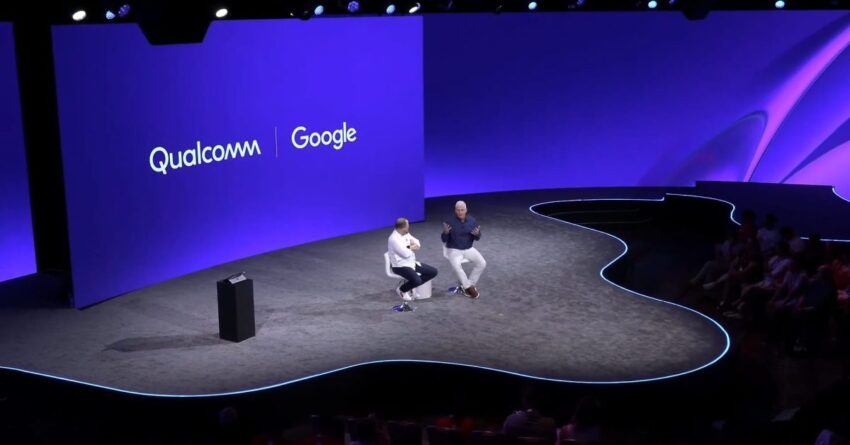
google says more on desktop android qualcomm During the Snapdragon Summit 2025, Qualcomm’s CEO Cristiano Amon engaged in an insightful discussion with Google’s Rick Osterloh, shedding light on the future of desktop Android and Qualcomm’s enthusiastic role in its development.
google says more on desktop android qualcomm
Qualcomm’s Vision for Desktop Android
Qualcomm has long been a key player in the mobile technology sector, providing chipsets that power a vast array of smartphones and tablets. However, the company’s ambitions are now extending into the desktop realm, as evidenced by the recent discussions at the Snapdragon Summit. Amon expressed that Qualcomm is “incredibly excited” about the potential of desktop Android, indicating a strategic pivot that could reshape how users interact with their computing devices.
The Role of Google in Desktop Android Development
Rick Osterloh, Senior Vice President of Platforms & Devices at Google, joined Amon on stage to elaborate on Google’s vision for desktop Android. Osterloh emphasized that the collaboration between Google and Qualcomm is crucial for the success of this initiative. He noted that desktop Android aims to provide a seamless experience that integrates the capabilities of mobile devices with the functionality expected from traditional desktop operating systems.
The collaboration between these two tech giants is expected to leverage Qualcomm’s powerful Snapdragon processors, which are already well-regarded for their performance in mobile devices. By adapting these processors for desktop use, the goal is to create a versatile platform that can handle both productivity and entertainment tasks effectively.
Implications for Users and Developers
The introduction of desktop Android could have significant implications for both users and developers. For users, the prospect of a familiar Android interface on a larger screen could enhance productivity and accessibility. Features that are popular on mobile devices, such as notifications, app integration, and multitasking, could be optimized for a desktop environment.
Enhanced User Experience
One of the primary advantages of desktop Android is the potential for a more cohesive user experience across devices. Users who are accustomed to Android on their smartphones will find a similar interface on their desktops, reducing the learning curve associated with switching between different operating systems. This familiarity could encourage more users to adopt desktop Android as their primary computing platform.
Opportunities for Developers
For developers, the launch of desktop Android presents new opportunities for application development. With a growing user base, developers can create applications that cater specifically to desktop users while still maintaining compatibility with mobile devices. This dual approach could lead to a richer ecosystem of applications that leverage the strengths of both platforms.
Moreover, the integration of Android applications into a desktop environment could simplify the development process. Developers may be able to use existing codebases for mobile applications, adapting them for desktop use without starting from scratch. This could accelerate the pace of innovation and increase the number of applications available for desktop Android.
Technical Considerations and Challenges
While the prospects for desktop Android are promising, there are several technical considerations and challenges that need to be addressed. The transition from mobile to desktop requires significant adaptations in terms of user interface design, performance optimization, and hardware compatibility.
User Interface Design
One of the most critical aspects of developing desktop Android is creating a user interface that is intuitive and efficient for larger screens. Unlike mobile devices, where touch interactions dominate, desktop environments often rely on keyboard and mouse inputs. This shift necessitates a rethinking of how applications are designed and how users interact with them.
Google and Qualcomm will need to collaborate closely to ensure that the user interface is not only functional but also visually appealing. This may involve creating new design guidelines that cater specifically to desktop users while still retaining the essence of Android’s design language.
Performance Optimization
Performance is another crucial factor in the success of desktop Android. Qualcomm’s Snapdragon processors are known for their efficiency and power, but adapting them for desktop use will require careful optimization. The operating system must be able to leverage the hardware capabilities effectively to ensure smooth performance, especially when running resource-intensive applications.
Additionally, the ability to multitask seamlessly will be essential for users who expect to run multiple applications simultaneously. This will require robust memory management and efficient resource allocation to prevent lag and ensure a responsive experience.
Hardware Compatibility
Another challenge lies in ensuring hardware compatibility. Desktop Android will need to support a wide range of peripherals, including keyboards, mice, and external displays. Qualcomm and Google must work together to create a platform that is versatile enough to accommodate various hardware configurations while maintaining a consistent user experience.
Market Reactions and Future Prospects
The announcement of desktop Android has generated considerable excitement within the tech community. Analysts and industry experts are closely monitoring the developments, recognizing the potential impact on the computing landscape. The collaboration between Google and Qualcomm is seen as a strategic move that could disrupt traditional operating systems like Windows and macOS.
Industry Expert Opinions
Industry experts have expressed optimism about the future of desktop Android. Many believe that the integration of mobile and desktop experiences could lead to a more unified ecosystem, where users can seamlessly transition between devices without losing productivity. The potential for enhanced application development and user engagement is also a point of interest for many stakeholders.
Potential Challenges from Competitors
However, the road ahead is not without challenges. Established players in the desktop operating system market, such as Microsoft and Apple, will likely respond to this new competition. Both companies have robust ecosystems and loyal user bases, making it crucial for Google and Qualcomm to differentiate desktop Android effectively.
To succeed, desktop Android must offer unique features and advantages that appeal to users and developers alike. This could involve leveraging the strengths of Android’s app ecosystem, enhancing security features, and providing a seamless integration with cloud services.
Conclusion
The discussions at the Snapdragon Summit 2025 mark a significant step forward in the evolution of desktop Android. With Qualcomm’s commitment to developing powerful hardware and Google’s vision for a cohesive user experience, the future of desktop computing could be transformed. As both companies continue to collaborate, the tech community eagerly anticipates the unveiling of desktop Android and its potential to reshape the computing landscape.
Source: Original report
Was this helpful?
Last Modified: September 24, 2025 at 9:36 am
4 views















